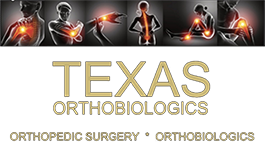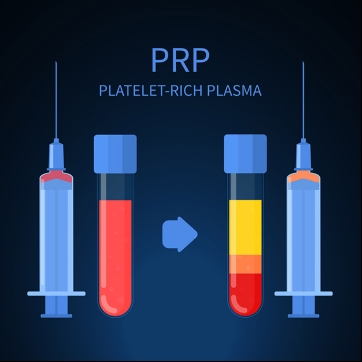In case you haven't heard about platelet-rich plasma (PRP) injections yet, they're a form of regenerative medicine that boost your body’s own capabilities for healing itself.
Plasma is the fluid part of your blood, composed mostly of proteins and water, and it acts as the medium for red blood cells, white blood cells, and platelets to be delivered to all parts of the body. The platelets themselves are responsible for causing blood clots and carrying out other healing functions. Activating these platelets is a critical aspect of accelerating the healing process, which is the foundation of PRP therapy.
How do PRP injections work?
Once blood has been drawn from an individual, the platelets are concentrated outside the body, and then re-injected at a site that has been damaged in some way or requires healing. PRP injections are frequently used to heal tendons, muscles, joints, and ligaments.
Before re-injection, the blood that was originally extracted is processed through a centrifuge to accomplish the concentration and activation of the platelets. Then, when re-injected as PRP, the platelets help release growth factors that increase the number of repair cells in the body and accelerate their activity.
The actual injection process is sometimes carried out by ultrasound guidance, to ensure the injection is made as close as possible to the injured site, and that the maximum benefit of the platelet-rich plasma is delivered to the site that needs it.
One of the great things about PRP injections is that they aren’t rejected by the body because the material comes from the person's body in the first place - it is not a foreign substance.
Medical conditions treatable by PRP injections
Injections of platelet-rich plasma are most often used to treat torn tendons, inflamed joints, neck, shoulder, and back pain, and different muscle injuries. Since it is purported to speed the healing of injured muscles and tendons heal, it is frequently to treat sports injuries and other severe kinds of tissue damage. PRP injections are also being used in cosmetic procedures for treating hair loss and reducing facial wrinkles.
More research is necessary to find other potential applications for PRP injections, but there is tremendous potential for quite a few medical applications.
Where to go?
Dr. Don Buford of Texas Orthobiologics is considered an expert in regenerative medicine and frequently uses PRP injections in his treatment protocols.
In his practice, Dr. Buford treats a number of painful orthopedic conditions, traumatic orthopedic injuries, and degenerative orthopedic conditions. To learn more about PRP injections, click here.








Post a comment
Your email address will not be published. Fields marked (*) are mandatory.